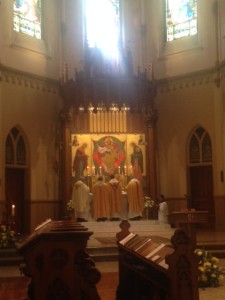Poetry tills and harvests in the fields of metaphor.
When Shakespeare’s Romeo muses, “Juliet is the sun,” he is not making a statement that is literally true. But it is true. How so? Oddly enough, answering this question involves us in more metaphorical speech.
![Christ's Ascension is the founding movement of every liturgical celebration. Now He intercedes for us at the right hand of the Father [Romans 8: 34].](https://chicagomonk.org/wp-content/uploads/2015/07/ascension-coptic-215x300.jpg)
